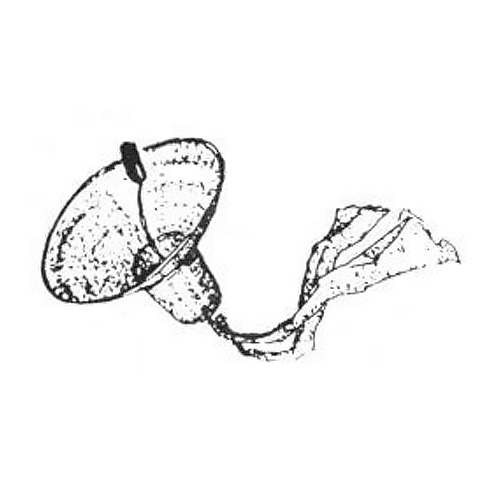rebaling overview
 Reba Ling (pinyin: Rè bā líng), Tibetan called Reba Si, Han people called Reba Ling, Bian Ling. Popular in Tibet, Sichuan, Yunnan, Qinghai, Gansu and other provinces. The height of the bell is 3 cm, the wall of the bell is smaller and the cymbal is slightly thicker. The bulge in the center of the disc is called the top of the bell, and a small hole is drilled. One section of the belt is a bell handle, and the end of the handle is decorated with a red ribbon.
Reba Ling (pinyin: Rè bā líng), Tibetan called Reba Si, Han people called Reba Ling, Bian Ling. Popular in Tibet, Sichuan, Yunnan, Qinghai, Gansu and other provinces. The height of the bell is 3 cm, the wall of the bell is smaller and the cymbal is slightly thicker. The bulge in the center of the disc is called the top of the bell, and a small hole is drilled. One section of the belt is a bell handle, and the end of the handle is decorated with a red ribbon.The specifications of Reba bells vary. The Tibetan Song and Dance Troupe has a bell with a height of 5 centimeters and a diameter of 13 centimeters.
When playing, hold the leather handle of the bell with the right hand, the bell mouth is facing upwards, and the bell tongue hits the edge of the bell mouth to make a sound, and the tone is crisp and bright. It is used to accompany the Tibetan folk song and dance "Reba Drum Bell Dance". "Reba" was originally a form of singing and dancing in Tibet. In the old days, it was also called "Reba" by the local folk artists who wandered around. Later, after refining and enriching this form of performance, it became today's "Reba Drummer Dance". During the performance, the female artist holds the Reba drum in the left hand and the hook-shaped drum in the right hand. The male artist holds the Reba bell in the right hand and the red yak tail in the left hand. props.
- Pinyin:Rè bā líng
- popular area:Tibet, Sichuan, Yunnan, Qinghai, Gansu and other provinces
- shape:The bronze body of the bell is disc-shaped and shaped like a small cymbal
- Bell mouth diameter:13.5 cm
- Classification:Tibetan Shaking Body Musical Instrument
overview of other similar instruments
- sanyanxiao overview
- Daguangxian overview
- Leiqin overview
- hahao overview
- yandundagu overview
- Han Xiaozheng overview
- Fang Xiang overview
- guanzi overview
- zhuqin (Dao Qin) overview
- zhuiqin overview
- bangzi overview
- three-stringed piano overview
- Gehu overview
- xiao overview
- xiaokonghou overview
- Konghou overview
- Sheng overview
- suona overview
- hulusi overview
- gushao overview
 渝公网安备 50010702504639号
渝公网安备 50010702504639号